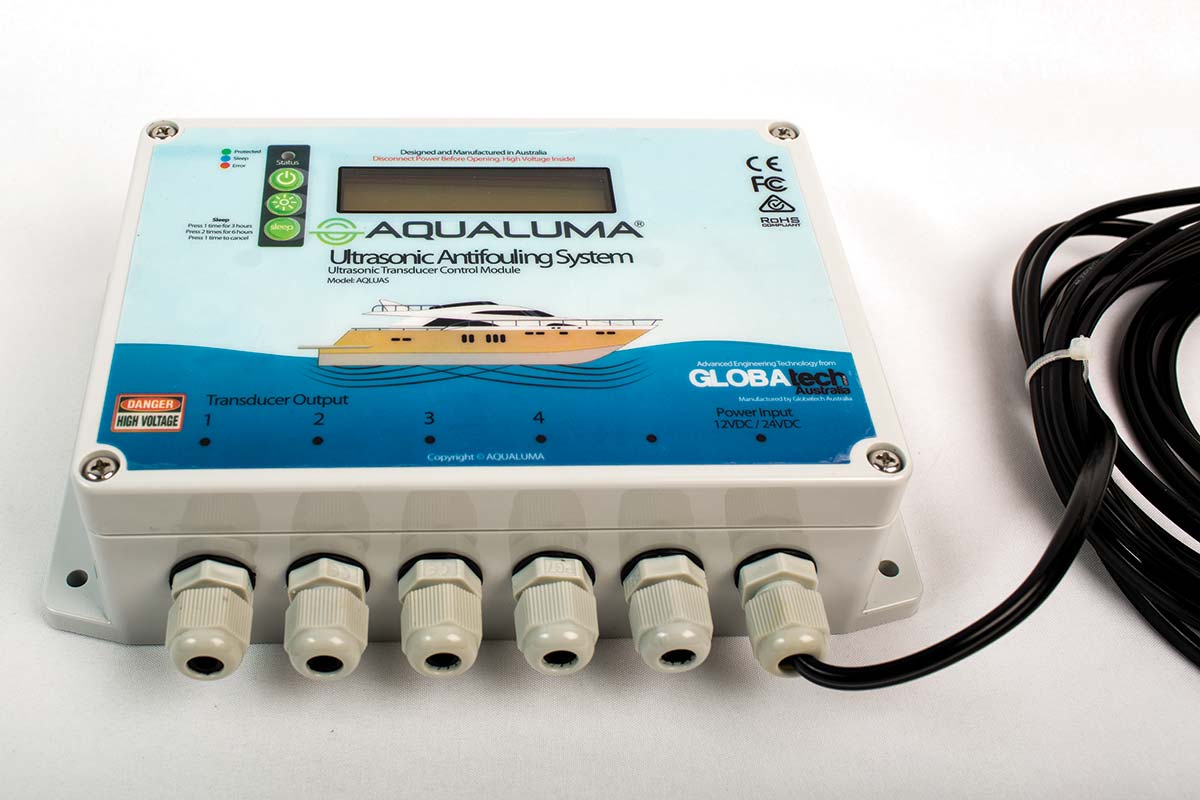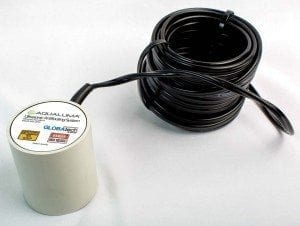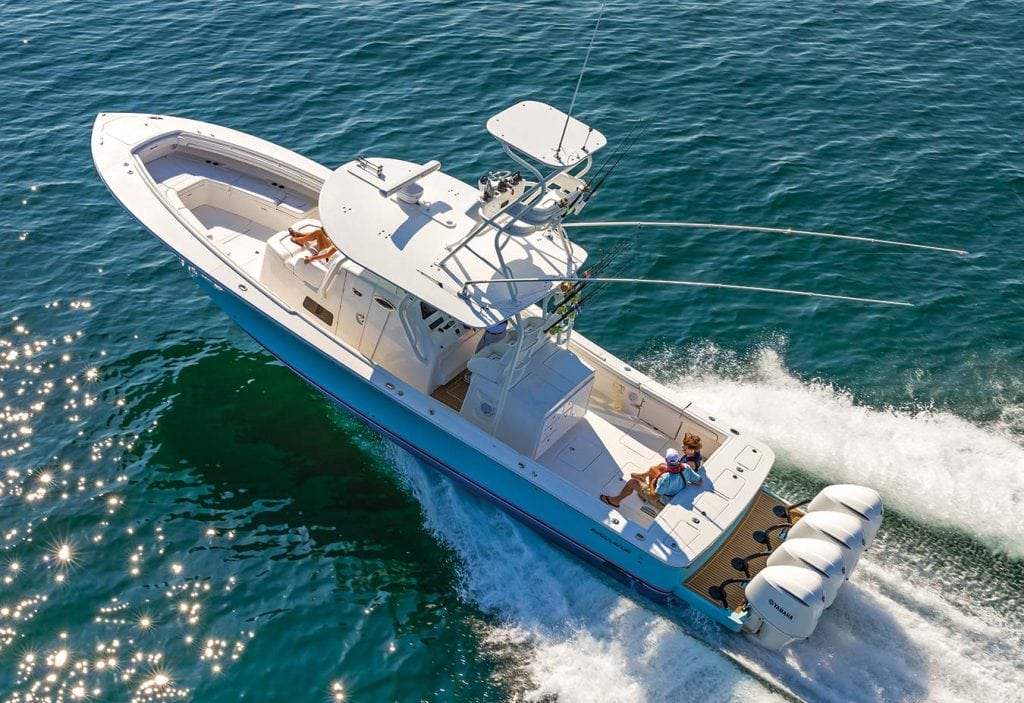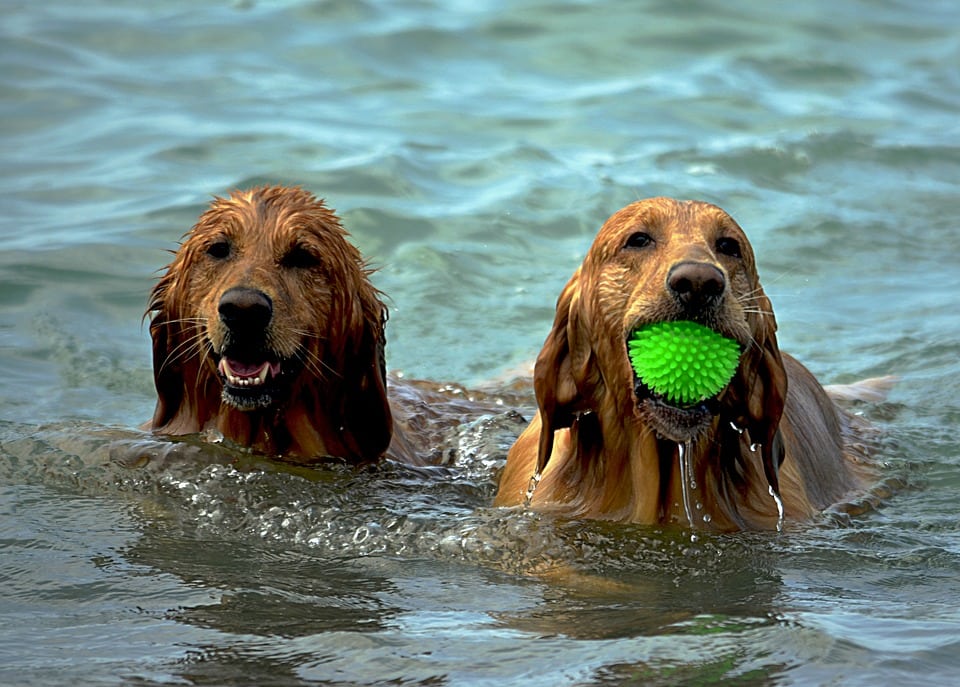An improved tool in the war on biofouling may change your ideas about bottom protection.
Biological fouling, or biofouling, has been a thorn in the side of mariners since they first scrambled onto logs and floated downriver toward salty seas. Both plants and animals— from algae slime and waterborne, single-cell microorganisms to barnacles and mussels— find ways to attach themselves to immersed surfaces like boat hulls, floating aids to navigation, dock pilings, and mooring gear.
From copper plating to coatings containing various biocides, our ongoing battle with biofouling has advanced through the centuries as new technologies emerged to lengthen the time between expensive haul-outs required for scraping. Every boat owner worthy of the name accepts the fact that a thorough, routine cleaning is mandatory to optimize the flow of water across the bottom in order to maintain predictable performance and minimize fuel consumption.
Ultrasonic antifouling has been around for several decades and it has numerous commercial applications aside from recreational boating. It’s often said that the idea of using sound to prevent bottom fouling was first discovered by the U.S. Navy. Sonar transducer plates, when active, exhibit far less biofouling than sections of hull around them. With multi-year waits between dry docking and billions of dollars in fuel costs at stake, military and commercial operators rely on a blend of ultrasonic and coating solutions for antifouling efforts.
Coatings, of course, have evolved rapidly over the last 10 years, very much in response to concerns for the effects that biocides have on the overall health of our lakes, rivers and oceans. Heavy metals like tributyl tin (TBT) are virtually gone, and the new generation of paints rely either on tried-and-true copper or silicone-based compounds for lower toxicity and easier biofouling release. It’s interesting to note that virtually every manufacturer of ultrasonic antifouling equipment recommends the use of bottom coatings to help minimize osmotic damage to the hull. This will also help to protect those areas out of range of the transducers where they are positioned.
A recent release from the North American offices of Aqualuma (aqualuma.com), the Australian-based manufacturer of a comprehensive range of light emitting diode (LED) underwater lights, announced the availability of a leading edge line of ultrasonic antifouling products for yachts of all sizes. Simply stated, the system uses a central processing unit—powered by 12- or 24-volt DC aboard with either two or four outlet terminals—to power transducers that are glued to the inside of a boat’s hull.
The number of transducers required for your boat depends on its size and the temperature of the surrounding water. For instance, small boats up to 26 feet LOA kept and operated in lower temperature waters may only need one transducer. Move that boat to moderate temperature locations and the number grows to two transducers. Take that boat to high or tropical temperature locations, and the number becomes three transducers. Boats from 26 to 40 feet will need three, four or six transducers across that same range—the latter requires two control units. Boats from 40 to 65 feet will need six, eight or ten transducers accordingly, moving from cooler to tropical temperatures. Boats of this larger size will require two to three control units.
The scalability of the system and specialized transducers available allow owners to target areas of concern: the hull, running gear, props, rudders, sea chests, sea strainers as well as specialized systems such as thrusters, pod drives, waterjets, and stabilizers. With the exception of wood hulls, the system is designed for fiberglass, carbon fiber, Kevlar, aluminum, or steel boats. Prices for the basic system range from $800 to $2,000 depending on the application.
The control units are programmed to automatically output ultrasonic signals of varying strength and duration to produce specific digital low-power frequencies from the transducers. The sound waves emitted by the transducers form a molecular-level barrier of microscopic bubbles that form and collapse continuously. This helps to prevent algae from adhering to the hull bottom, which is the attractor for larger marine organisms like barnacles and mussels.
NRG Marine Ltd., the Australian-based company that builds these units for AquaLuma, also offers them to the rest of the world under the trademark name Sonihull. They include some nifty features like automatic calibration for a wide range of installations, output current monitoring, and an advanced self-monitoring program for reliability. They claim to provide up to 30 percent more output for the same input compared to other units of different design, which marks a huge jump in efficiency.
There are other types of units on the market such as those offered by the UK-based Ultrasonic Antifouling Ltd (ultrasonic-antifouling.com) or the Netherlands-based ShipSonic (shipsonic.com). PYI (pyiinc.com) has recently started bringing the NGR Sonihull brand product into the U.S. But when a company like AquaLuma invests heavily in a new technology and brings it to the American market, with all of its diverse marine ecosystems, my bet is that this unit will give owners the kind of antifouling results that are sure to satisfy.
By John Wooldridge, Southern Boating September 2016
















